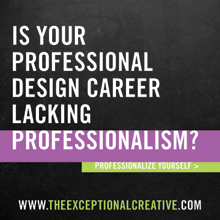During an event I attended this past year I had a conversation with a friend via text. (Gasp! I know, so disrespectful, but you'll understand why shortly.) It went a little something like this:
Me: D-R-Y
Her: And way overscripted
Me: Painfully. Yikes.
Her: Should have brought coffee. Yawn.
As you could probably gather, the event basically bombed. I left feeling super disappointed and (as illustrated by the texting) am certain I wasn't the only one. They say you learn more through your mistakes than your successes. I've decided that whenever possible, I'm going to learn more from others mistakes so I can avoid making my own. Smart, right? Thanks to my mentor's encouragement, I've taken the time to analyze what didn't work at this so-called failed event so I can do just that.
Disclaimer: My point here is not to be cynical and nit-picky, but to provide some relevant thoughts for those of us who do public speaking from time to time, particularly as creatives.
Before diving in, here's a brief synopsis of the event components:
- Presentation on design/marketing/branding
- Real life case studies
- Q&A
And now, the lessons:
------------
1. Engage your audience.
My dad's done a ton of public speaking. Growing up, I sat through countless previews. The one thing he was always sure to do was engage his audience. Many times this included a story about myself of my sister; the fact that they were personal and sometimes embarrassing made them all the more engaging. This Speech 101 principle is easier said than done, admittedly, but there are many ways to accomplish it. (When all else fails, give away money!) The presenters at the event did everything but engage the audience. They read from a script and, well, other points to follow.
2. If you love what you do, it should show.
Design, marketing and branding are fun. Talking about it should be, too.
3. Be transparent.
As previously mentioned, a couple of case studies were featured and the documents involved in the study were referred to but we didn't get to see a single one. Instead of just referencing what you studied and learned, show your audience. (Think photos, charts, videos, stories and hard facts.) They're hungry for it and likely paid good money to be privy to it. What you give your audience in being transparent is the marrow of your presentation. They'll connect to you and connect with what you're saying...and isn't that the whole point? I've decided that the "show" in "show and tell" is first for a reason.
4. People are (generally) smart.
There are way too many buzzwords in the world. It seemed we heard practically every one on that wearisome day. I'll admit that I too have had some fun with my marketing dictionary, but that's something I can do on my own time. When I've come out to hear experts in the industry speak, I want to hear new ideas, not text-book tactics sandwiched between buzzwords. Blech.
------------
The failed event was unfortunate, but I feel lucky to have been there. A) Because I learned more from it than what I might if it had just been okay. B) It was a great reminder to feel fortunate to have been able to attend several fabulous presentations over the last couple of years (by Devin Liddell, Aaron Draplin, Frank Chimero, Jelly Helm, Sumner Stone and others), all of which have given me some lofty standards. Disappointment only proves you were once satisfied.
Photo credit: Li Song via Flickr (type overlays by yours truly)




what a nice way of making lemonade from some very tart lemons :)
ReplyDelete